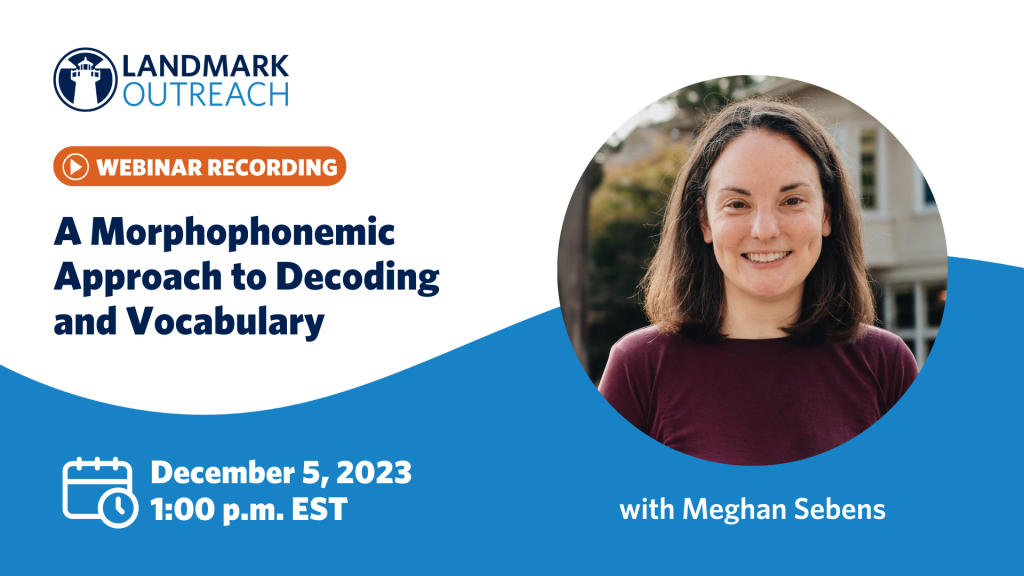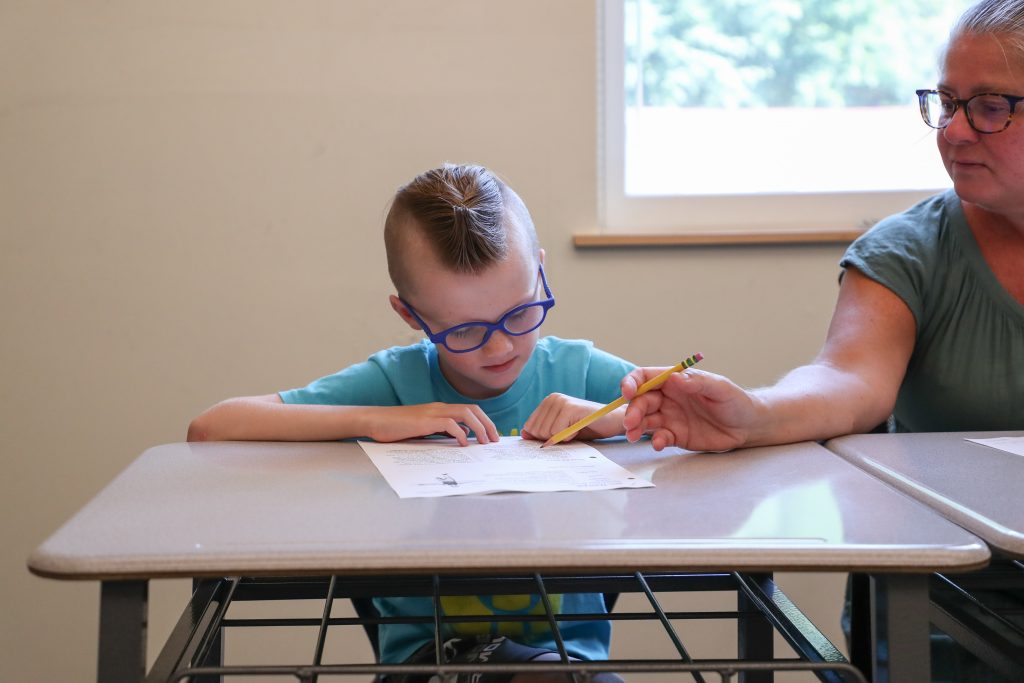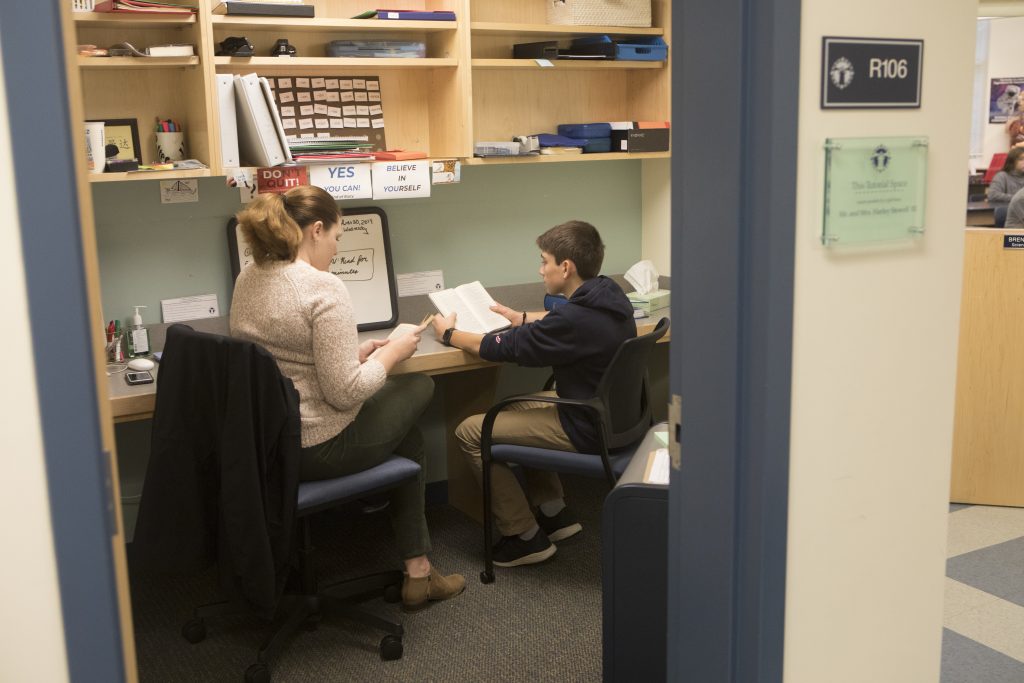Inequity in Literacy
Literacy goes far beyond the ability to read and write. Rather, it is literacy that affords us the opportunity to participate in our society, from being able to obtain reasonable housing to voting knowledgeably in elections for policymakers who hold our interests at stake. With so much on the line, literacy must be a priority across the country. However, according to Louisa C. Moats (2020), “about 20 percent of elementary students across the country struggle with learning to read, and another 20 percent are not meeting grade-level expectations in reading” (p. 5). That’s a total of almost 40% of our nation’s elementary students not achieving literacy expectations and who are at risk of not being able to function fully in our society.
Those students are now in the Matthew Effect cycle, where students who read well read often while students who have difficulty reading, don’t. In 1988 Cunningham and Stanovich looked at the relationship between outside-of-school reading and educational achievement. What they found was that students who read for an average of 20 minutes a day outside of school read almost 2 million words a year whereas students who read for only about a minute read anywhere from 8,000 – 100,000 words (p. 141).
Educator and activist, Kareem Weaver says: “In order to save our kids and to get them competitive in the information age, they have to be able to access information. And so we’ve got to focus on literacy.” Because literacy is the gateway for access to the world around us, then building equity in literacy is about providing fair and equitable instruction and educational opportunities for all students to achieve the necessary levels of literacy to actively engage in society.
Addressing a Harmful Narrative
In order to address the problem, we must first acknowledge that there is a problem: we are faced with inequity in literacy instruction and achievement, particularly for students of color. If we want to provide equity in literacy, we must first confront the barriers that create inequities in literacy.
First and foremost, we must start by breaking the “deficit model” narrative that low-income families or families of color can face. The deficit model suggests that students of low economic status, color, or of differing ability lack the necessary skills to be able to meet a high level of achievement, and therefore educational expectations are lowered for them. In his book Reaching and Teaching Students in Poverty: Strategies for Erasing the Opportunity Gap, Dr. Paul Gorski explains in an interview with Laurie Posner (2015) that the deficit model directly contradicts an equitable educational opportunity. He says, “It is impossible to hold that view and have high expectations of marginalized students simultaneously. I know it’s hard to hear, but 75 percent of our ability to create equitable learning environments is about perspective.”
Access to Funding and High-Quality Instruction
Beyond our own beliefs and achievement expectations, there are tangible and measurable ways to increase equity within literacy. The first is through funding. Increased funding can unlock barriers to high-quality physical spaces, instructional and classroom materials, and highly trained educators.
While the merits of different approaches to reading instruction have been a historically debated topic, scientists and researchers today agree that the science of reading is a body of ever-growing research in the fields of cognition, education, and neuroscience (to name a few) that highlights how the human brain learns to read. It is widely acknowledged that the human brain is not hard-wired for reading, but rather for oral language. Therefore, reading develops from speech to print with systemic and explicit instruction beginning with phonemic awareness. Given this consensus, it stands to reason that educators should be expected to be well-versed in the science and research that supports student reading achievement, including:
- Acknowledging that reading is a complex process that involves the activation and coordination of several regions of the brain
- Understanding that reading achievement is the product of language comprehension and decoding as outlined in The Simple View of Reading
- Familiarity with the strands in Hollis Scarborough’s Reading Rope that further specify word recognition as encompassing phonological awareness, decoding, and sight recognition while language comprehension includes background knowledge, vocabulary, language structure, verbal reasoning, and literacy knowledge.
- Awareness of the five pillars of reading instruction (phonemic awareness, phonics, fluency, vocabulary, and comprehension) as outlined by the National Reading Panel
- Recognition of phonemic awareness as a building block of literacy instruction with an emphasis on early instruction and intervention
However, according to a study by the National Council on Teacher Quality, of 820 undergrad elementary programs examined in 2016, only 39% included [this] type of training. There is unanimous agreement within the research world about how the brain learns to read, and it’s time that the educational system requires that knowledge on all levels.
Creating an Equitable Literacy Classroom Environment
True equity in education must be a top-down approach that includes early screening and identification of at-risk students, a scope and sequence for necessary skills across grade levels, and access to high-quality progress monitoring data tracking. However, each and every educator has the power to create a more equitable literacy environment. To start, consider these tips:
- Evaluate student performance and provide the appropriate level of instruction
- Track student progress and data to support and intervene using research-based methods as necessary
- Honor and recognize the diversity and strengths of the students in the classroom and build connections with each and every student
- Take every opportunity to learn more about every culture so that students feel seen, valued, and heard
- Provide students with a variety of culturally diverse materials and instruction
- Teach the hard topics- students need to learn how to think critically, not just about curricular content, but also about the structure of society
- Notice even the most subtle bias and address it – whether that be in materials, interactions, or innuendos
- Hold all students to high expectations with the appropriate scaffolding and supports
- Be mindful of technology access, available resources, and ways to communicate with family members
Most importantly, representation matters. Yes, students should be immersed in a variety of cultural materials that represent all walks of life, but students should also have the benefit of a more diverse teaching and administrative population. All students deserve to see themselves represented in their education. After all, it is those affected by inequity in education whose voices deserve to be heard. Building equity in education is a nationwide demand. This blog post serves as one snapshot of a multifaceted crisis.
References
- Barrett, Lindsay. October 2, 2018. “20 Ways to Bring More Equity to Your Literacy Instruction.” Retrieved from Weareteachers.com.
- Cunningham, Anne E. and Keith E. Stanovich. (2001) What Reading Does for the Mind. Journal of Direct Instruction. Vol 1 (2). P. 137-149.
- Goldberg, Margaret. August 4, 2019. “Race, Class and Reading Research.” Right to Read. Retrieved from Reading Rockets.
- Lubell, Sam. February 9, 2017. “The Science of Teaching Reading.” National Council on Teacher Quality.
- Lambert, S. (Host). (2022, January 12) What it takes to be a literacy education changemaker: Kareem Weaver. (No. 14) The Science of Reading. Amplify. https://www.buzzsprout.com/612361/9841172
- Moats, Louisa C. Summer 2020. “Teaching Reading Is Rocket Science: What Expert Teachers of Reading Should Know and Be Able to Do.” American Educator. Vol 44. No 2. P. 4
- Pondiscio, Robert. February 11, 2021. “Literacy is Equity.” The Thomas B. Fordham Institute.
- Posner, Laurie M.P.A. March 2015. “Opportunity Matters: The Path to ‘Equity Literacy’- An Interview with scholar and social justice advocate, Dr. Paul Gorski.” Intercultural Development Research Association.
- Stanovich, Keith. Fall 1986. “Matthew effects in reading: Some consequences of individual differences in the acquisition of literacy.” Reading Research Quarterly. XX1. 4.
- Swalwell, Katy. December 21, 2011. “Why Our Students Need ‘Equity Literacy.’” Learning for Justice.
- Texas Reading Initiative. 2002. “Promoting Vocabulary Development: Components of Effective Vocabulary Instruction.”



